
Commonwealth Scientific and Industrial Research Organisation (CSIRO)
CSIRO is Australia’s national science agency, solving the greatest challenges through innovative science and technology. CSIRO uses collaborative research to turn science into solutions for food security and quality; clean energy and resources; health and wellbeing; resilient and valuable environments; innovative industries; and a secure Australia and region.
CSIRO’s vision is to be Australia’s innovation catalyst, collaborating to boost Australia’s innovation performance.
To deliver on this purpose, CSIRO: conducts and encourages the uptake of world-class scientific research, through its business units and future science platforms; mobilises and develop the best talent, for the benefit of Australia; and manages national research infrastructure for the nation.
CSIRO is a valued long-term partner of ACEMS. CSIRO's chief aim is to improve the economic and social performance of industry, for the benefit of the community, and ACEMS/CSIRO collaborations foster projects with this focus.

2021 Overview
The CSIRO-ACEMS partnership remained strong in 2021, with new and ongoing research collaborations, graduating and continuing HDRs, important engagements for knowledge transfer and network building, and quality outputs, outcomes and impact. It’s also a great testimony to the partnership that both CSIRO and ACEMS members have already expressed interest and made commitments for collaborations and engagements beyond ACEMS.
Highlights for 2021 include:
- Basic research supported by ACEMS, including on sequential Monte Carlo Methods, is being applied for real world benefits in collaboration with CSIRO (see Research Theme: Informed Decisions) and others.
- Several co-funded/co-supervised PhD students, postdocs and collaborative research projects continuing beyond 2021.
- The Ideas Challenge project involving a cross-node collaboration, citizen science, and two vacation student research projects was funded and is delivering outputs and promising future opportunities and impact.
- Continuation of collaborative research projects, including for and with CSIRO’s RiskLab (with many outputs plus knowledge-sharing via seminars), and related to climate, cognitive psychology, and infectious disease.
- Recognition of researchers from ACEMS and CSIRO, via awards and appointments.
- Research outcomes and impacts, including research into policy documents, end-user downloads of research software and important uses of software.
- Research symposiums and workshops, for ACEMS, CSIRO, and others from academia/industry, including on: Environmental Modelling; Climate Extremes; Queuing Theory; and Responsible Data Science.
- ACEMS Final Retreat 2021 featured CSIRO speakers and panellists.
2021 Research Collaborations
Sequential Monte Carlo (SMC) Methods: From Basic Research to Applications
A strength of the CSIRO-ACEMS collaboration is in translating frontier research for real world impact. In 2021, this has been exemplified by the application of new sequential Monte Carlo (SMC) methods/algorithms developed by ACEMS (some with collaborators), to challenging applications in collaboration with industry partners including CSIRO.
SMC Methods Advanced by ACEMS
SMC and related particle filters are useful for Bayesian inference in complex models. ACEMS has supported the development of new SMC methods that optimally exploit a surrogate model to speed-up calculations and new particle filtering methods for stochastic differential equation mixed effect models.
Successful applications of SMC methods in collaboration with CSIRO include:
- Soil carbon sequestration - with CSIRO’s Dan Pagendam, ACEMS PhD student Mohammad Javad Davoudabadi, and AIs Chris Drovandi and Gentry White.
- History matching with CSIRO’s Dan Pagendam, AI Chris Drovandi and external collaborator David Nott.
ACEMS and CSIRO Supported Research Students
CSIRO has supported many ACEMS HDR and student projects over the years, including by way of co-supervision, scholarships, access to data, and more. An overview of a handful of current students are below.
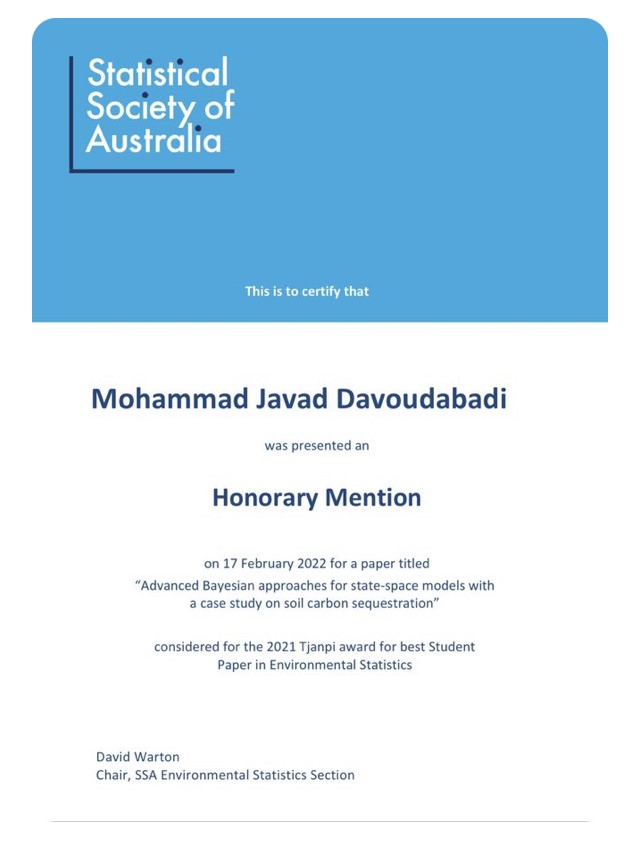
ACEMS Higher Degree Research Students
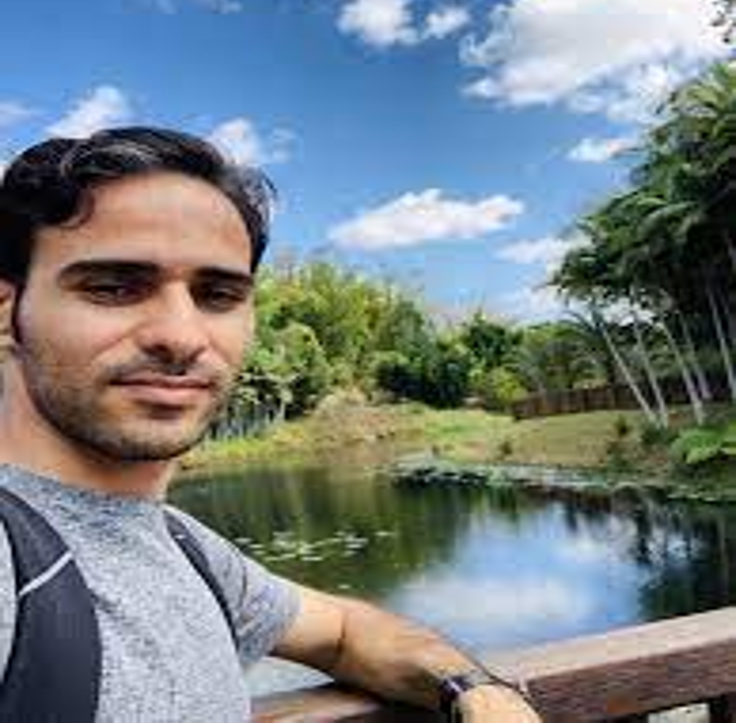
Mohammad Javad Davoudabadi (QUT)
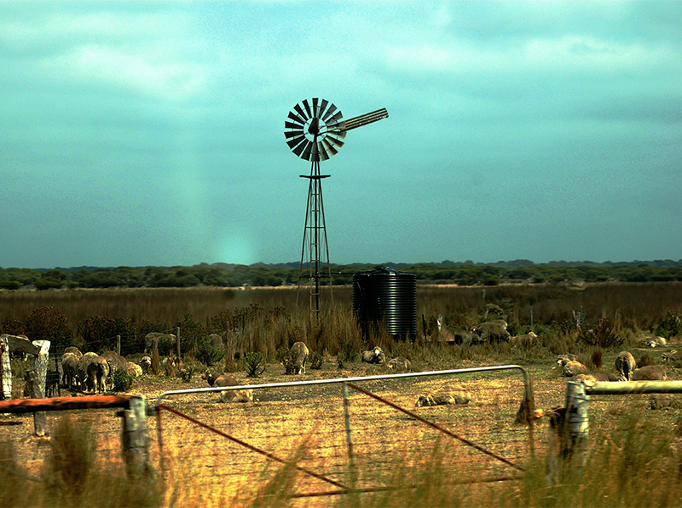
Bayesian model selection and inference for field studies of soil carbon cycling
Farmers and land managers typically rely on computationally complex models, fit using sparse datasets, to make predictions concerning soil carbon stocks - and that can lead to over-fitting.
Modellers address over-fitting by simplifying their models and reducing the number of parameters. Also, employing computationally efficient methods is of great interest as this is imperative for transforming these models into useful decision support systems that allow farmers and other land managers to rapidly obtain predictions of soil carbon stocks using standard computer hardware.
The first contribution of this thesis is the development and evaluation of advanced Bayesian methods, such as the auxiliary particle filter (APF) and Rao-Blackwellised particle filters (RBPFs), for modelling soil carbon sequestration and quantifying uncertainty around predictions from complex soil carbon models. We focus on methods that can improve the speed of computation when estimating parameters in a statistically defensible way.
The second contribution of this work is related to investigating how the soil organic carbon (SOC) components and complexity of the SOC models affect the SOC prediction in the presence of small and sparse datasets. In this regard, we develop three new SOC models based on amalgamating some of the SOC components. Additionally, a new model selection method is developed to identify the soil carbon model with the best predictive performance, in light of the available data.
Finally, the last contribution is in exploring microbial population growth as driving mechanism on soil carbon decay rates and how such a change might affect the accuracy of modelling soil carbon sequestration. In reality, it might be expected that the decomposition rates of various soil carbon pools should be related to the population of microbes in the soil. We explore the effect of microbial population growth on the accuracy of modelling soil carbon sequestration by developing and comparing two soil carbon models that consider a carrying capacity and limit to the growth of the microbial pool.
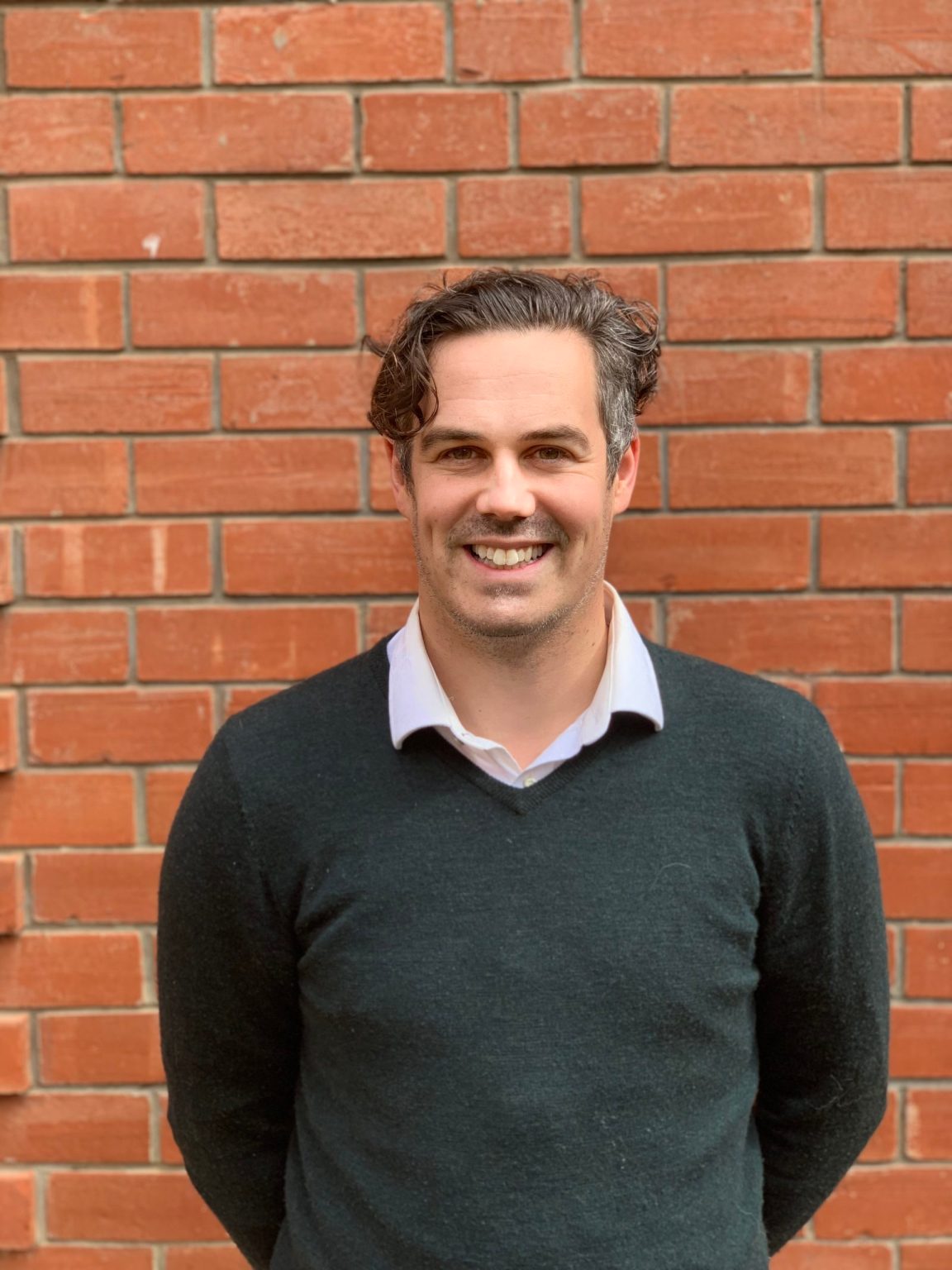
Andrew Feutrill (UoA)
Techniques for Cyber Exploit Prediction
Andrew is a Data Scientist and the Team Leader of the Security Data Science group. His main research interests are applying probability theory to the security domain, which includes the modelling of the arrival vulnerabilities, modelling of the expected time until exploit of disclosed vulnerabilities and understanding attack paths through networks. Previously he worked for the Department of Defence, Australian Federal Police and Data to Decisions CRC to deliver research and proof of concept applications to assist analysts and investigators make better decisions. He has now moved to Amazon working on demand forecasting and optimisation.

Sayani Gupta (Monash)
Statistical analysis and visualisation of spatially distributed big time series electricity usage data
Electricity smart meter technology is increasingly being deployed in residential and commercial buildings. The technology facilitates the collection of energy usage data at much finer temporal scales than was possible previously, such as at hourly or less intervals. The introduction of smart meters affords the opportunity to better model and understand residential and business energy usage patterns between months, between days and within days, something that is not possible using only quarterly energy usage information. Using the geographical data of the households also makes it possible to identify spatial and spatio-temporal patterns. This work will concentrate on undertaking research into spatial and spatiotemporal visualisation and inferential methods for cognostics of spatially distributed big time series electricity usage data. The research activity has three main aims:
- Cognostics methods for electricity usage time series data with spatial and spatiotemporal structure. The aim is to test existing and/or develop new metrics for time series data for use as (spatio-temporal) diagnostic statistics.
- Develop visualisation methods for spatial and spatio-temporal cognostics for spatially distributed big time series. An aim is to inform decisions and develop new (intuitive, interactive) tools and graphics, support analysis for anomaly/error detection, and to explore and summarise behavioural patterns/changes & associations between variables.
- Develop inferential methods for spatially distributed large time series electricity usage data. Help identify with confidence statistically meaningful relationships/clusters in energy usage data (which likely exhibits complex multi-seasonality, serial and spatial correlation).
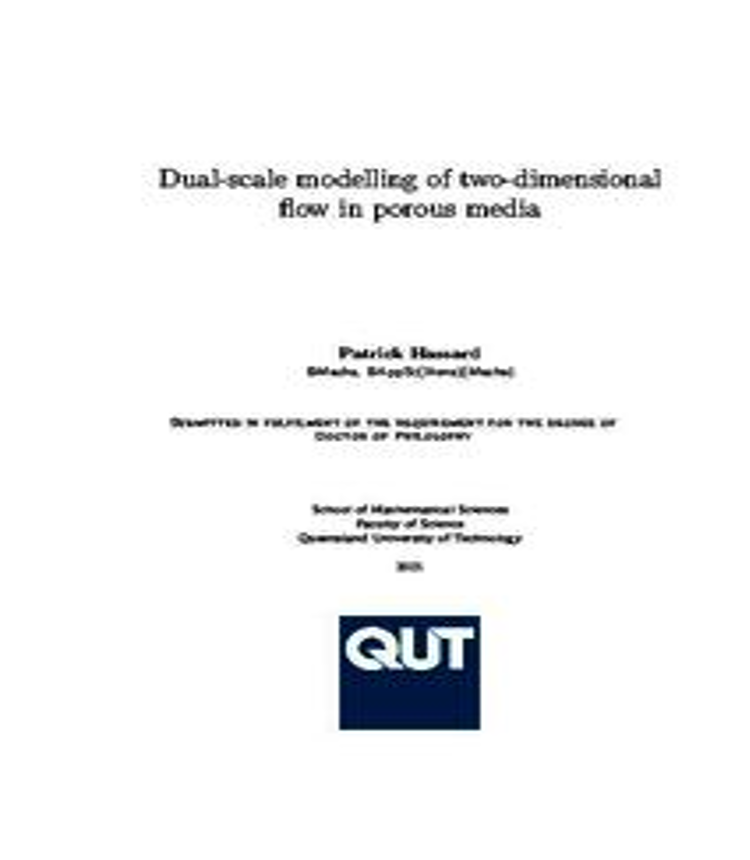
Patrick Hassard (QUT)
Dual-scale modelling of two-dimensional flow in porous media
The standard approach to modelling fluid flow through a porous medium was developed decades ago, when computational resources were insufficient to feasibly simulate the flow directly. In this thesis, the feasibility of such flow simulation with modern computing power is demonstrated via the development of three accurate and efficient dual-scale models of porous media flow. An important outcome of the research is that the new dual-scale modelling framework accurately and efficiently simulates flows with a range of Reynolds numbers through a variety of heterogeneous porous media.

Shuwen Hu (QUT)

Statistical modelling and machine learning methods for the analysis of longitudinal data - and - Application to Classification of Sheep Behaviour
Shuwen’s thesis mainly concerns the statistical modelling and machine learning methods for the analysis of longitudinal data. As a contribution to this area, this thesis provides theoretical discussion and empirical illustrations of longitudinal data analysis. The first contribution is developing methods to obtain robust and efficient variance estimators when the cluster size is large. The second one is comparing a traditional parametric approach, the linear mixed model with machine learning methods in longitudinal data analysis. The last one is extracting new features to improve sheep behaviour classification accuracy of different machine learning algorithms.

Sherry Zhang (Monash)
Projection pursuit on multivariate temporal data
Sherry is supervised by CSIRO’S Nicolas Langrené and ACEMS AIs Di Cook and Patricia Menéndez. Her research focuses on visual diagnostics of stochastic algorithms, or projection pursuit optimisation.
Sherry has also been contracted as a Research Assistant to work on the CSIRO-ACEMS Ideas Challenge project on wind observation data.
CSIRO-ACEMS Co-funded Research Projects & Post-Docs
As well as ongoing collaborations with co-supervised students, ACEMS and CSIRO/Data61 researchers will continue to collaborate in cross-disciplinary teams in 2021 and beyond. Details of some exemplar projects, each supported by a co-funded and co-located postdoctoral researcher, are shown below.
| CSIRO-ACEMS Multi-Year Research Collaborations Commencing 2021 | |
|---|---|
| “Bayesian approaches to prediction and state tracking in multi-scale systems” | Aims:
|
| “Bayesian inference for psychological theories with intractable likelihood” | Aims:
|
ACEMS Ideas Challenge Submissions and Funded Project
CSIRO and ACEMS members submitted four proposals to ACEMS Ideas Challenge for new CSIRO-ACEMS collaborative research projects (see table below).
Each of these project ideas presented promising opportunities for collaboration with CSIRO and ACEMS researchers.
ACEMS Ideas Challenge Ideas for new CSIRO-ACEMS collaborative research projects
- Complementing official wind records with crowd-sourced observations for improved forecasts of wind and fire behaviour.
- Statistical modelling in transcriptome sequencing.
- Cyber threat detection using AI – particularly influence operations conducted via social media.
- Explainability in Artificial intelligence.

Ultimately, ACEMS Ideas Challenge funding was able to support one project proceeding in 2021: Complementing official wind records with crowd-sourced observations for improved forecasts of wind and fire behaviour.
This project aims to harness crowd-sourced wind observation data, including to help forecasts and responses to extreme weather events including bushfires, and help harness expertise from all collaborators.
The importance of this research is highlighted in collaborative research by ACEMS AI Kate Saunders “Research quantifying the attribution of climate change to Australian bushfire risk” which was cited in the “state of the Climate Report” co-authored by CSIRO and BOM. In 2021, it was featured in at least three policy documents:
- Bushfires and fuel reduction burning - Cited by Parliament of Australia on 28 Oct 2021.
- World Heritage forests : Carbon sinks under pressure - Cited by the International Union for Conservation of Nature.
- Impacts of natural hazards and climate change on EU security and defence - Cited by The Publications Office of the European Union.
Read more about this in the Research Theme - Informed Decisions report.
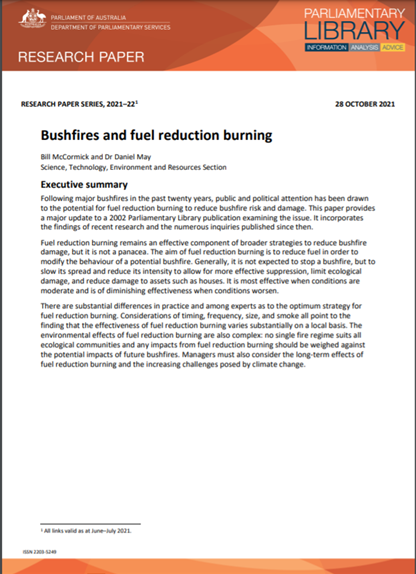
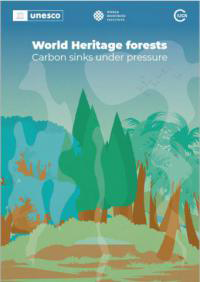
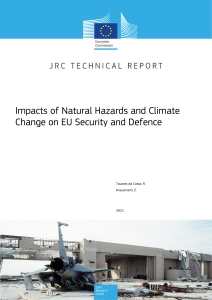
“Complementing official wind records with crowd-sourced observations for improved forecasts of wind and fire behaviour”
This project led by ACEMS AI Kate Saunders involves harnessing crowd-sourced wind observation data, including for official purposes including improved forecasts of wind and fire behaviour.
Citizen/Amateur Science Weather Station Research (including Wind Station Profiles)


Learn more about the International collaboration here and the case study on Kate’s research.
Citizen weather stations (CWSs) could help build better weather models for Australia too - if we can first address statistical challenges and adapt the method for the distinct Australian climate and topology.
A statistical challenge is improving trust in the data quality of crowd-sourced wind observations, which has heretofore prevented the use of these observations in studies of meteorology and climate. CSIRO’s partner investigators for this project are Carolyn Huston and Dr Petra Kuhnert. See here for more information about the project.
In 2021, the CSIRO-ACEMS team formed and, despite COVID-19 disruptions, made significant progress. This has included:
- Preparation of a working paper "Identifying bushfire blind spots and why we need responsible innovation" to be submitted for publication in early 2022.
- Presenting to BOM with the aim of extending the collaboration.
- Project lead supervising two vacation research students (see below) on parts of the project aiming to improve trust in citizen science data (e.g., by addressing biases).
- Securing other grant-funding, including to expand the network of citizen science wind stations.
- Promotion of related research and the project on an ACEMS Podcast “Official Winds”.
- Developing plans to leverage CSIRO’s STEM Professionals in Schools program/network to recruit schools to install the Citizen science weather stations and collect wind data for further research.
- Discussing their research with ACEMS members from the AT&T Ideas Challenge, which also has a bushfire-focus, to explore to future opportunities for collaboration and funding.
The citizen/amateur wind data collected, and treated with statistical tools these collaborators create, can be used for many different applications - including weather, bushfire, environmental and other applications.
Further, these research collaborators aim to use springboard from this pilot project, to secure other funding.
CSIRO collaborators Carolyn Huston and Petra Kuhnert presented on this research collaboration at the ACEMS Final Retreat. The table below includes key slides from Carolyn’s presentation which also discusses CSIRO’s relevant work. Watch the presentation.
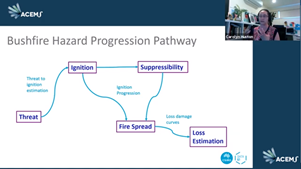
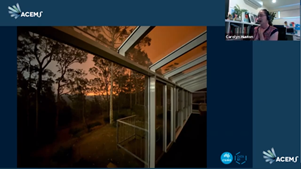
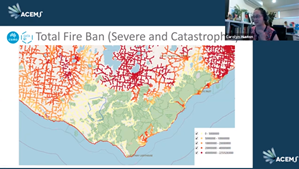
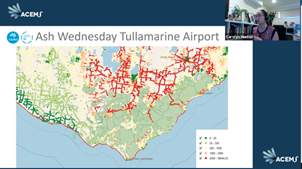


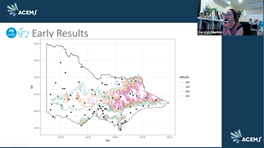
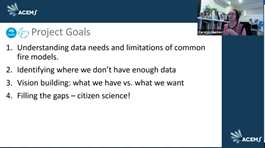
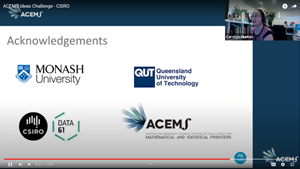
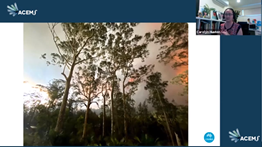
Listen to ACEMS podcast “Using stats to crowdsource the weather” to learn more about the citizen science project with collaborators including CSIRO and the foundational research by ACEMS AI Kate Saunders (formerly of and co-supervised as an ACEMS PhD student by CSIRO) and her collaborator Kirien Whan with whom she jointly won the Harry Otten Prize for innovation in meteorology

Related Vacation Research Experience Student (VRES) Projects
ACEMS AI Kate Saunders supervised two QUT undergraduate students undertaking VRES projects related to the above wind-data collaboration, both aiming to increase the quality control of, and trust in using, citizen science wind station data. See details in this table
CSIRO RiskLab Collaborations
ACEMS researchers from all nodes, and particularly Monash University, have enjoyed collaborating with researchers from CSIRO’s Risklab, and their industry collaborators, for many years. The table below provides an overview of CSIRO RiskLab Australia and some key collaborators.
About CSIRO RiskLab and Key Collaborators (CSIRO, ACEMS & Industry)

| CSIRO Researchers working with ACEMS | ACEMS Researchers working with CSIRO | Industry Collaborators |
|---|---|---|
|
|
Challenger Website: https://www.challenger.com.au/about-us -Challenger is an investment management company with a vision to provide customers with financial security for a better retirement. -PI Mr Aaron Minney - Challenger Head of Retirement Income Research Accurium Website: https://www.accurium.com.au -Accurium is an “award winning actuarial certificate and SMSF education provider” Douglas McBirnie |
| Visit the CSIRO RiskLab Australia website to learn more, view interactive tools, and read RiskLab’s publications. | ||
RiskLab collaborator ACEMS CI Rob Hyndman was elected a Fellow of the Australian Academy of Science in 2021, recognising his distinguished contribution in the field of forecasting, which has benefited the CSIRO RiskLab collaboration.
2021 Research Outcomes and Impact
Research impact, including:
- Significant end-user downloads of research software produced as an output from the collaboration between ACEMS and CSIRO.
- Use of output software for conservation research, including for quantifying the aesthetics of the Great Barrier Reef (including to support UNESCO reporting) and, in 2021, for similar research for Antarctica.
- Research into policy documents in Australia and internationally.
Use of CSIRO-ACEMS Software for Antarctica Conservation Research
ACEMS is using the R2VR software (an earlier output of ACEMS-CSIRO collaborators), for a research project “Virtual Antarctica: Quantifying Aesthetic Values of the Antarctic Peninsula” (see the Challenging Data Theme Report for more information). This research seeks to explore the definition of aesthetics used with respect to conservation in Antarctica. Immersive experiments were performed in 2021 using the R2VR web-based framework (https://github.com/ACEMS/r2vr) which allows researchers to perform Virtual Reality experiments. A Bayesian hierarchical model was then developed to estimate Antarctica’s aesthetic attributes using answers from the virtual interviews. This model accounts for uncertainties associated in people’s responses and prior scientific knowledge on Antarctica conservation values. The aim of this preliminary exploration is to integrate this knowledge into broader strategies of conservation. Understanding of aesthetic attributes in Antarctica can be applied to other regions, especially through the implementation of similar surveys and models.
2021 Engagements & Knowledge Transfer
CSIRO has generously engaged with ACEMS for a diversity of purposes, including mutually beneficial knowledge exchange, supporting industry, and the mentoring and professional development of ACEMS students and early- and mid- career researchers.

“Environmental modelling for better predictions and decisions” symposium session with industry, HDRs and researchers across Queensland, including from CSIRO.
2021 ACEMS Symposia / Workshops with CSIRO
| Symposium: Environmental modelling for better predictions and decisions | Research symposium focused on 'Environmental modelling for better predictions and decisions'. The day featured research seminars (by students, postdocs and academics), networking, workshops, and discussion. Key environmental and modelling topics covered included:
|
| Statistical Extremes x Climate Extremes Online Workshop | The general theme is around how we model extreme rainfall and flood events like the NSW Floods earlier this year. As part of this we hope to discuss topics about where statistics could better support climate science and where we need to develop the statistical models of extremes further, so we are in keeping with the physics. The groups of people who consider themselves extreme value theorists in Australia is small and we have a core group to run the workshop, but we could really benefit from a few more similarly statistically inclined voices who are interested in topics like spatio-temporal modelling in hydro-climate applications or people who have experience with variable selection in statistical/machine learning models that capture complex climate interactions. |
ACEMS Annual Retreat Industry Keynote Speaker - CSIRO’s Sally Cripps
“Frontier and future direction of data science” for which new methodologies need to be developed; ranging from learning structure from data, to learning probabilistic physical models from data, from the challenge of small data to the challenge of massive data at different scales, from adaptive sampling to adaptive reinforcement learning. These data science challenges are motivated by three real challenges facing Australia; the stewardship of our natural resources, the improvement of societal health and the competitiveness of our Industries. Operating at this nexus of methodology and application is the future of data science and is driving the formation of a new discipline.

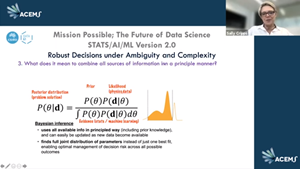
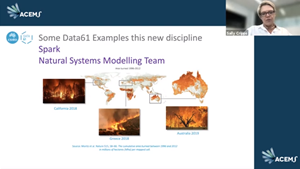
CSIRO PI Petra Kuhnert gave a presentation at ACEMS Retreat highlighting job opportunity for ACEMS members.
Job Opportunities for ACEMS HDR Graduates and Postdoctoral Researchers at CSIRO Data61



Our Partner Investigator and Collaborators
Over the years, at least 79 CSIRO researchers have engaged and collaborated in informal knowledge transfer through to formal collaborations with at least 82 ACEMS researchers and students.
Partner Investigator
We thank Petra Kuhnert for her immense contribution to the CSIRO-ACEMS partnership, including her support of and participation in engagements and collaborations, since commencing as CSIRO’s PI in 2019. Petra took on the role from Tomasz Bednarz who remains a valued collaborator of ACEMS in his roles at CSIRO Data61 leading the Visual Analytics team, in Software & Computational Systems research program and as a Director at the Expanded Perception & Interaction Centre (EPICentre) UNSW Art & Design.
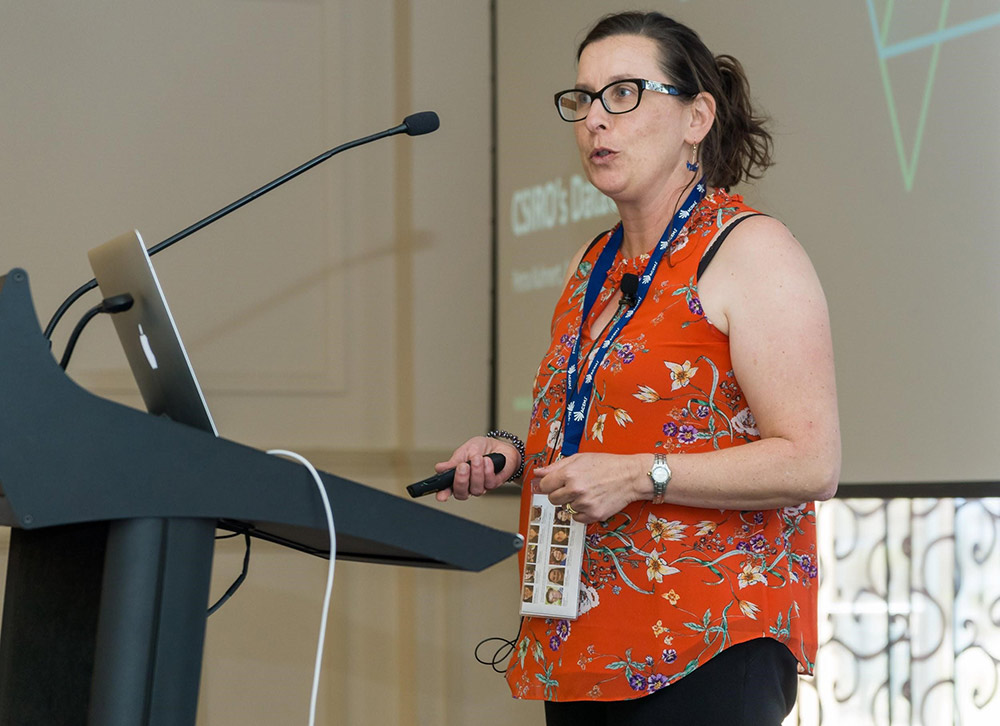
Petra Kuhnert at her first ACEMS Retreat as PI
ACEMS’ CSIRO PI Petra Kuhnert
Petra Kuhnert is a Research Statistician in Data61. Her most recent research interests are focused on managing model uncertainty and its communication for decision making. She is the Activity Leader for the Hybrid Model Prediction Activity in the newly formed Machine Learning Artificial Intelligence Future Science Platform in CSIRO. Petra is interested in novel approaches for integrating statistics with machine learning. She has authored more than 40 publications in high-ranking applied journals and was an associate editor of Environmetrics (2013-14). She is the recipient of the 2010 CSIRO Julius Award and the 2013 Abdel El-Shaarawi Young Investigator Award, for interdisciplinary collaboration and impact.
